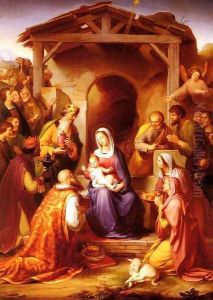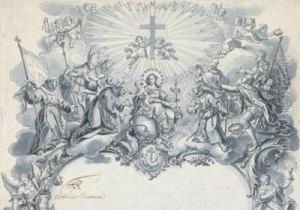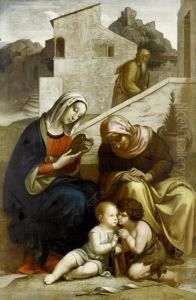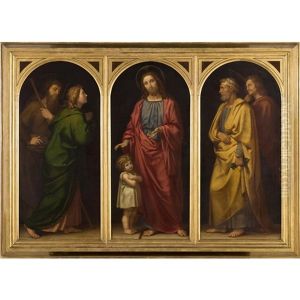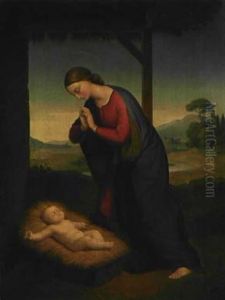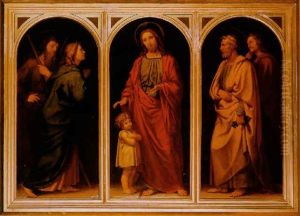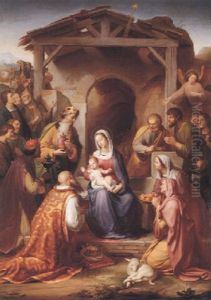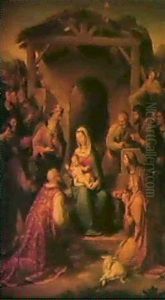Franz von Rohden Paintings
Franz von Rohden was a German painter known for his religious and historical subjects, deeply rooted in the Nazarene movement. Born on November 18, 1817, in Hanover, Germany, Rohden's artistic journey was influenced by early 19th-century romanticism and the desire to revive the spirituality and purity of medieval and early Renaissance art. His works are distinguished by their devout nature, meticulous detail, and the serene harmony they evoke, embodying the Nazarene movement's ideals of returning to the simplicity and devoutness of early Christian art.
Rohden's education in art began in his native Germany, but his quest for artistic and spiritual depth led him to Rome, which was the heart of the Nazarene movement. In Rome, he became closely associated with other artists of the movement, such as Friedrich Overbeck and Peter von Cornelius. These connections not only influenced his stylistic development but also integrated him into a community that valued spirituality in art as a reaction against the perceived superficiality of Neoclassicism.
Throughout his career, Franz von Rohden dedicated himself to creating works that reflected his deep religious conviction. His paintings often depicted biblical scenes, saints, and allegories imbued with a sense of piety and contemplation. One of his most notable works is the altarpiece for the Church of St. Paulus in Rome, which showcases his ability to convey religious themes with emotional depth and technical precision.
Rohden's influence extended beyond his immediate circle through his contributions to various churches and religious institutions, where his works served not only as decoration but also as focal points for devotion and reflection. Despite the changing artistic trends over the course of his life, he remained committed to the principles of the Nazarene movement, seeking to imbue his art with a sense of moral and spiritual integrity.
Franz von Rohden passed away on August 14, 1903, in Rome, leaving behind a legacy that continues to be appreciated for its devotion to religious art and its role in the broader context of 19th-century European art. His works remain a testament to the Nazarene movement's impact on art history, embodying the search for authenticity, spirituality, and a return to the values of early Christian and Renaissance art.
